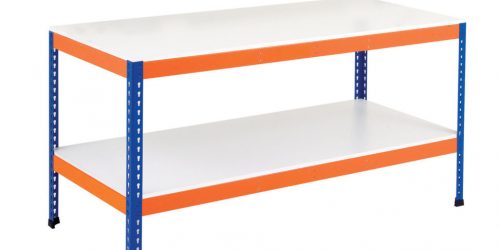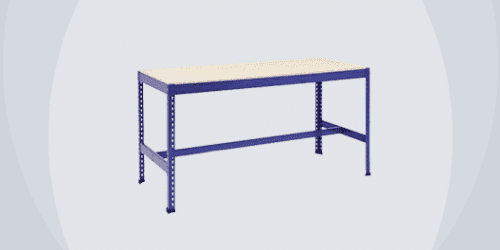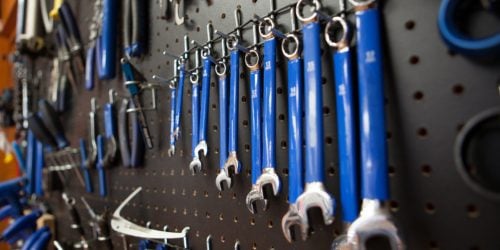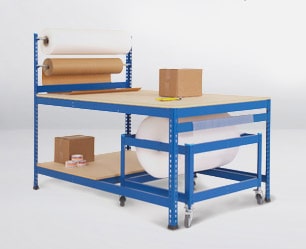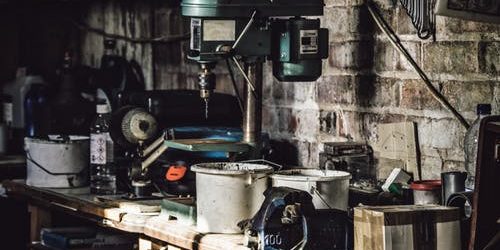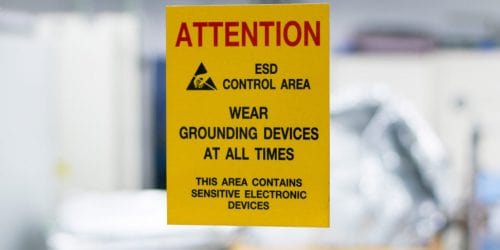How to Repair Workbench Rust
Is your workbench a little on the rusty side? Do not fear…we are going to share some handy tips to get rid of that nasty corrosion so that your workbench is left looking as good as new! Using dangerous chemicals to clean work surfaces is never ideal, so we have put together some more user-friendly methods of cleaning.
What is rust?
Rust is a reddish-brown oxide that is a by-product of the reaction between iron and oxygen, making objects such as workbenches appear less attractive and old. As well as posing a health and safety risk (such as developing tetanus) to those exposed to the rust, rust can also damage the integrity of an item as it gets worse over time.
What causes rust?
You may be wondering why your workbench is rusty in the first place. Essentially, rust is caused by oxygen reacting with iron when there is water, acids or other chemicals around. The process of rusting occurs faster when more metal is exposed – for example, if any iron oxide flakes off of the metal, more iron molecules are then exposed which allows the rusting to continue until large areas are left damaged by rust. There are certain steps you can take to avoid rust which will allow you to keep metal surfaces such as workbenches in good, rust-free condition.
Steps on how to repair workbench rust
The method you use to get rid of the rust on your workbench will depend on a few factors, such as how much rust there is to treat and which areas are affected the worst by the rust. The following steps will help you to repair workbench rust so you can remove corrosion and get your workbench looking it’s very best!
- Put on some goggles and gloves – Before tackling the rust, it’s a good idea to put some safety goggles and gloves on to protect your eyes and hands from any flakes of rust.
- Use steel wool for small areas of rust – You can treat small areas of rust with steel wool by simply rubbing it hard over the affected areas. You may then apply some naval jelly to reach any areas you might have missed (this will be covered in step 4).
- Use a drill with a wire brush to treat large areas of rust – If the rust is just on the surface of your workbench, a fine wire brush should do the trick! Attach the fine wire brush to a drill and gently rub this over the affected area. Stop every now and again to check how much of the rust is coming away from the workbench and to dust it off with a cloth – if you notice that it isn’t making much of a difference because the rust is deep inside the workbench, you can try to press harder, or, alternatively, you can switch your fine wire brush for a thicker wire brush. It is important to note that the wire brush may scratch the surface of your workbench – this is why you should try and use a fine wire brush if possible so that you can prevent any damage. Once you have done all you can with the wire brush, rub the surface of your workbench with some steel wool to ensure that you have removed any rust that you may have missed.
- Apply a naval jelly rust dissolver to the workbench – Applying a naval jelly rust dissolver will also help to remove rust. Simply apply it to affected areas and leave it to work its magic for roughly an hour. Then you can use water to remove what is left and wipe the surface dry. If you can still spot some rust, repeat this process.
- Wipe the surface with mineral spirits and rub the metal with steel wool – If you are happy that you have removed as much of the rust as you can, it is a good idea to wipe the workbench with some mineral spirits and rub with steel wool so you can remove any grime or grease left from the naval jelly.
- Your workbench should now be looking much more appealing and rust-free!
How can you prevent metal from rusting?
- Keep the metal dry – rust thrives in wet conditions as the oxygen found in water molecules combines with iron to form iron oxide (this explains why you see so many rusty objects which have been left outside in the rain!) If you have a metal object such as a workbench inside a humid area, you should consider investing in a dehumidifier so that the area does not become damp.
- Keep the metal clean – as we’ve mentioned, water is one of the main culprits when it comes to rust, and, as dirt can hold water, this too can lead to metal rusting which is why you should regularly clean surfaces.
- Avoid scratching the metal and keep an eye on any cracks – any scratches on the surface of metal or cracks will hold water and leaves more of the metal exposed.
- Remove rust as early as possible if you find any, as it can spread quickly.
Looking for a workbench?
Whether you’re looking for an industrial workbench or a heavy duty workbench, Manutan has a range of workbenches to suit your needs to make the workplace a safe and comfortable environment to work in.
Why not take a look at our blog and find out more helpful tips about workbenches and organised workshops.

